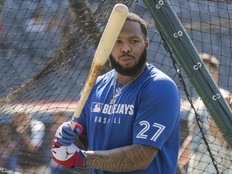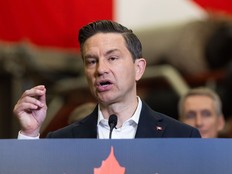Elephant in the room: still one massive unknown about Connor McDavid's new contract

Article content
Until Connor McDavid signs a new contract with the Edmonton Oilers, nothing is certain.
But according to numerous credible sources, hockey insiders like Bob Stauffer, Elliotte Friedman and Frank Seravalli, we can expect McDavid to sign sometime before Edmonton’s training camp starts in September, most likely on a deal ranging from three-to-five years.
But there’s an elephant in the room when it comes to the new McDavid contract, one that will have a significant impact on whether or not the Edmonton Oilers can successfully compete for a Stanley Cup in the next few years.
That huge detail is McDavid’s average cap hit on his new deal.
Let me start out by saying McDavid is such a tremendous player, he’s worth whatever pays him. But how much Edmonton pays him — and any other player — also impact the team’s chance to win the Cup. This is the hard truth of the matter.
On a free NHL market, McDavid could command more than $50 million per year. But under the NHL’s cap system, if he signs now, the maximum he can sign for is $19.1 million per year.
But there’s a rub. Under the cap system, teams only have so much they can spend on players, between $95.5 million and $113.5 million in the next few years as the cap rises.
McDavid will never been overpaid under this system, as some NHLers, including some of McDavid’s teammates, are overpaid. He will always be grossly underpaid based on his performance. But the more money that any one player takes under the cap system, the less money there is to hire other top players to compete for a Stanley Cup.
In the NHL’s cap era, 2006 to 2025, the Top Four players on each Stanley Cup winner have taken up 40.5 per cent of the salary cap on average.
The Florida Panthers were near that mark last year, with their top four players, Aleksander Barkov and Sergei Bobrovsky making $10 million each, Matthew Tkachuk making $9.5 million, and Ekblad $7.5 million, which had them take in a combined 42 per cent of the NHL’s cap of $88 million.
The top four on the Oilers, McDavid, Leon Draisaitl, Darnell Nurse and Mattias Ekholm took in less than that last year, just 41.2 per cent of the cap.
In those 20 years, just three teams have paid their Top Four more than 45 per cent of the cap and gone on to win the Stanley Cup, Anaheim in 2007 at 47.1 per cent, Detroit in 2008 at 47.3 per cent and Pittsburgh in 2016, 45.2 per cent.
Indeed, only six Stanley Cup winners in this 20 year period paid their Top Four more than 42 per cent of the cap, including Florida in 2023-24 at 44.3 per cent (though, of course, in recent years, it’s been common for Cup-winning teams, such as Tampa, Vegas and Florida, to essentially circumvent the salary cap by bringing back injured players during the playoffs, a practice that will be outlawed after the 2026 playoffs).
Evidently managing the cap wisely — which includes not paying more than about 42 per cent of the cap to your Top Four players — is a best practice for team success in the playoffs.
In the eight years of McDavid’s new $12.5 million per year deal, the Oilers been well-placed to compete for the Cup in terms of pay for their Top Four, with the those elite players taking in on average 42.1 per cent of the salary cap.
But this year, with major new raises for Leon Draisaitl and Evan Bouchard kicking in, that’s no longer the case. This year, Edmonton’s Top Four will take up 48.4 per cent of the $95.5 million cap.
That is a higher percentage than any team that’s ever won the Cup under the cap system. And that high percentage comes before any new contract that McDavid signs kicks in.
If McDavid’s new deal has a $14 million cap hit, just like Draisaitl’s new contract (and that’s about as low as I can see McDavid going in order to both get paid a fair amount and leave cap space for other players), Edmonton’s Top Four will take in 46 per cent of the cap in 2026-27, but just 42.1 per cent the year after in 2027-28, when the NHL’s cap is to rise to $113.5 million per team.
It’s already going to be more difficult for the Oilers to compete for the Cup this year given Nurse’s high pay and the raises for Draisaitl and Bouchard. But even if McDavid signs at the low end of his expected pay, it will also be hard in 2026-27.
If he signs for $16 million per year — and this number was mentioned by Seravalli last year as a probable cap hit for McDavid — Edmonton’s Top Four will be paid 47.9 per cent of the cap in 2026-27. The percentage will drop after that, as the cap goes up.
If he signs for $18 million per year, what I see as the high end for his pay, the cap hit of the Top four will be 49.9 per cent in 2026-27.
What to make of all this?
The hard salary cap system creates a major dilemma for top players. They are clearly worth a high percentage of the cap, but if they take that high percentage it decreases their chance of Stanley Cup glory.
If McDavid does take less in order to give the Oilers more cap space to win the Cup, there’s one way for that bet to pay off monetarily. A Stanley Cup win would mean significantly more opportunities for lucrative advertising and sponsorship deals. But that’s a risky bet, given how hard it is for any one team to win the Cup.
If McDavid were to sign a short-term deal for $14 million per year, that would help get the Oilers into better salary cap position to battle for the Cup in 2026-27. But if he were to take that amount, he might just want to take it for just one year, as the salary cap shoots up again in the 2027-28 season.
My own hunch is that he’ll take a $16 million per deal for four years, which will put the Oilers close to that magic below-45 per cent mark for the cap hit of the Top Four in time for the 2028 playoffs.
As for this year, with the Top Four set to earn 48.4 per cent, Edmonton is going to need some luck with injuries, some success in getting great years out of young and inexpensive forwards like Matt Savoie and Ike Howard, and skill with cap management in order to have its highest odds of winning the Cup.
In other words, like Tampa, Vegas and Florida in recent years, it’s going to need to have a player or two injured before the trade deadline, but ready to return for the playoffs, so the team can both load up on talent at the deadline, but get back its injured stars in time to compete for the Cup.
Of course, this strategy doesn’t just apply to Edmonton, but to all teams hoping to win the Cup this year. That’s the system the NHL still has, and teams have become masterful at working it.
At the Cult of Hockey
LEAVINS: Is this finally the goaltender the Edmonton Oilers have long been looking for?
STAPLES: Looking for pleasant surprises from the depths of the Edmonton Oilers’ prospects












Postmedia is committed to maintaining a lively but civil forum for discussion. Please keep comments relevant and respectful. Comments may take up to an hour to appear on the site. You will receive an email if there is a reply to your comment, an update to a thread you follow or if a user you follow comments. Visit our Community Guidelines for more information.